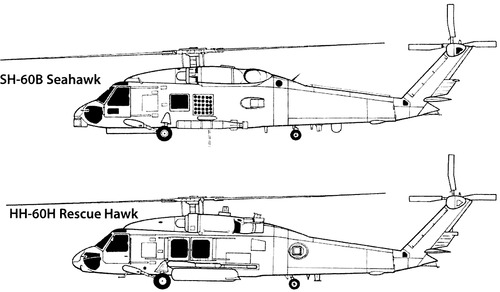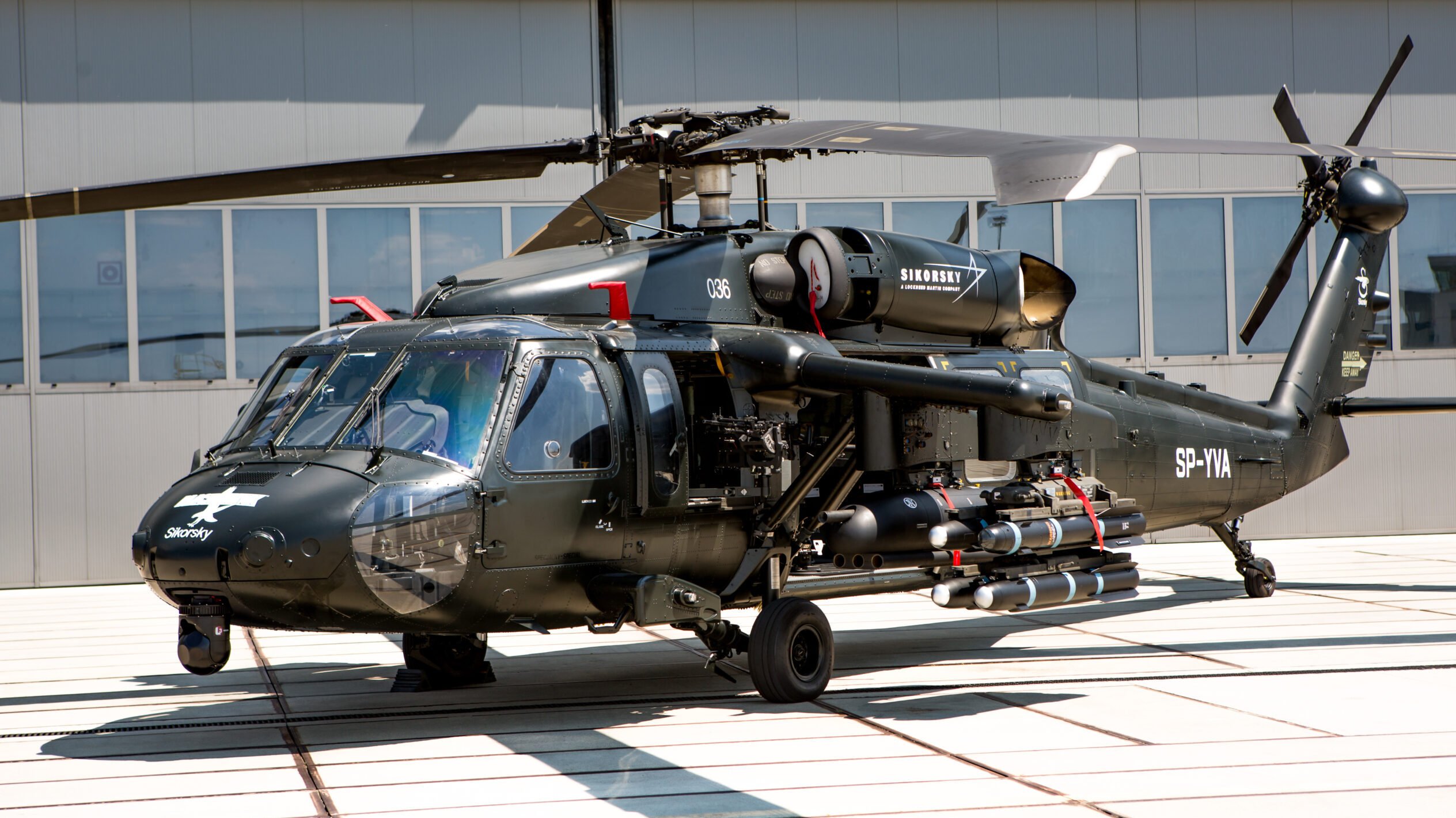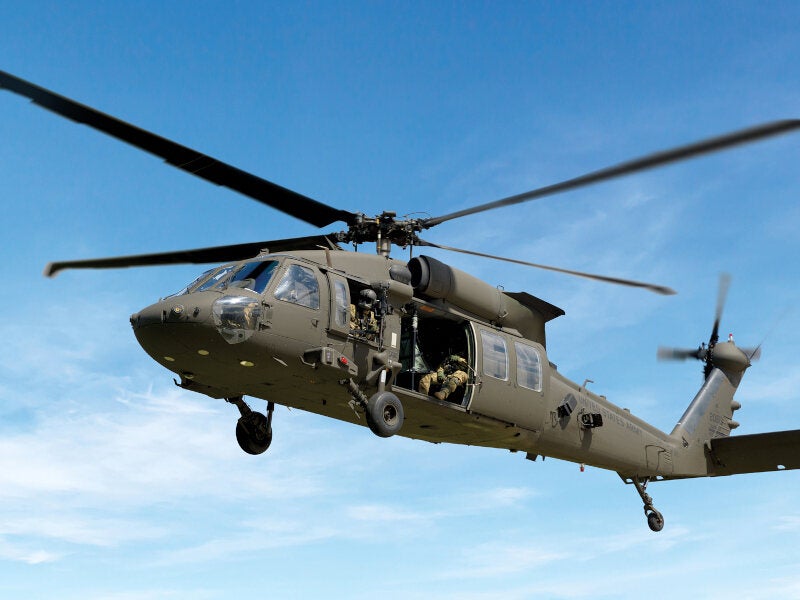Exploring the Capacities of the Sikorsky S 70: An Extensive Evaluation
Exploring the Capacities of the Sikorsky S 70: An Extensive Evaluation
Blog Article
High-Performance Multi-Role Rotorcraft Featuring Advanced Cockpit Technologies and Integrated Sensor Equipments
The realm of rotorcraft innovation has actually seen significant improvements in current times, particularly in the realm of high-performance multi-role rotorcraft outfitted with innovative cabin technologies and perfectly integrated sensing unit systems. These advancements have not just increased the functional abilities of rotorcraft however have also dramatically impacted modern air travel operations on different fronts. From enhanced mission flexibility to boosted operational performance, the convergence of sophisticated cockpit modern technologies and integrated sensing unit systems has introduced a new age of opportunities for rotorcraft applications. In the complying with conversation, we will certainly check out the evolution of rotorcraft modern technology, look into the world of innovative cabin technologies, and take a look at the implications of incorporated sensor systems on the functional flexibility and efficiency of contemporary rotorcraft.
Advancement of Rotorcraft Modern Technology
The evolution of rotorcraft modern technology has been marked by considerable improvements in the rules of aerodynamics, materials, and propulsion systems, shaping the abilities and efficiency of modern rotorcraft. Additionally, innovations in propulsion systems, consisting of extra effective engines and ingenious propulsion technologies, have actually made it possible for rotorcraft to attain higher altitudes, faster speeds, and greater payloads.
These improvements have not just changed the abilities of rotorcraft however have additionally increased their applications throughout different sectors, consisting of army, commercial, and emergency services. The continual evolution of rotorcraft technology continues to drive development in the field, pressing the borders of what is possible and forming the future of vertical trip.
Advanced Cabin Innovations
Building upon the fundamental innovations in the rules of aerodynamics, materials, and propulsion systems, the world of rotorcraft innovation now changes emphasis towards introducing Advanced Cabin Innovations. The assimilation of innovative innovations within the cabin environment plays an essential duty in improving the functional capabilities, safety and security, and effectiveness of modern-day rotorcraft. sikorsky s 70. Advanced Cockpit Innovations incorporate a wide selection of functions designed to supply pilots with improved situational recognition, streamlined information monitoring, and user-friendly control user interfaces
One of the crucial advancements in cabin design is the application of glass cabins, which replace typical analog evaluates with high-resolution display screens. These digital systems supply adjustable formats, real-time data assimilation, and enhanced readability, making it possible for pilots to gain access to crucial details at a glimpse. Advanced avionics systems, such as fly-by-wire controls and boosted fact display screens, are revolutionizing how pilots connect with the airplane, permitting for specific control and enhanced decision-making capabilities.


Incorporating sophisticated cockpit advancements not just improves pilot efficiency yet additionally adds to total objective effectiveness and security in complicated operational environments. By leveraging modern technologies within the cabin, rotorcraft producers are setting brand-new standards for functional excellence and goal success.
Integrated Sensor Equipments
With the advancement of rotorcraft modern technology, the combination of innovative Integrated Sensor Solution has come to be vital in improving functional effectiveness and safety. These Integrated Sensing unit Equipments encompass a wide variety of technologies that supply vital data for different functions such as navigating, surveillance, targeting, and ecological tracking. By flawlessly incorporating sensors like radars, electronic cameras, lidar, and infrared systems into rotorcraft, drivers can gain from enhanced situational awareness, improved goal capabilities, and decreased pilot work.
One key advantage of Integrated Sensing unit Systems is their capability to collect real-time information and provide actionable insights to pilots and goal drivers. Progressed radar systems can find and track targets over long ranges, enabling for very early danger detection and effective action planning. Additionally, integrating infrared and electro-optical cameras makes it possible for rotorcraft to conduct reconnaissance and monitoring objectives with precision and precision.
Essentially, the integration of innovative sensing unit innovations right into rotorcraft not just boosts functional efficiency yet likewise adds significantly to general objective success and team security. As rotorcraft proceed to develop, the function of Integrated Sensing unit Equipment will undoubtedly stay at the leading edge of technology in the aerospace sector.
Functional Flexibility and Effectiveness
Enhancing operational flexibility and efficiency in rotorcraft is a natural development from the assimilation of advanced Integrated Sensing unit Systems. By leveraging the information and understandings supplied by these innovative sensor systems, rotorcraft can optimize their efficiency throughout different objectives and environments.
Functional adaptability incorporates the capability of rotorcraft to adapt to various functions and situations efficiently. With innovative cabin innovations and integrated sensor systems, rotorcraft can effortlessly transition in between jobs such as search and rescue, clinical evacuation, security, and extra. This adaptability improves the rotorcraft's capability to fulfill diverse functional requirements without requiring considerable reconfiguration.
Effectiveness in rotorcraft operations is essential for maximizing objective efficiency and resource use. Integrated sensor systems play a crucial function in enhancing operational performance by offering real-time data on weather, terrain mapping, target monitoring, and a lot more. This information enables pilots to make educated decisions promptly, enhance trip courses, preserve fuel, and enhance general goal performance.
Effect On Modern Air Travel Procedures

Moreover, the integration of advanced sensors assists in improved goal planning and implementation, allowing rotorcraft to execute a large range of tasks with boosted accuracy. From search and rescue procedures to aerial firefighting and law enforcement missions, the abilities of modern rotorcraft equipped with innovative cabin next page innovations and integrated sensor systems are exceptional.
Furthermore, the effect of these advancements expands past functional effectiveness to cost-effectiveness and sustainability. By optimizing flight courses, fuel consumption, and maintenance routines, high-performance rotorcraft geared up with sophisticated cockpit modern technologies and sensors add to decreasing operational costs and environmental effect, making them essential assets in modern aviation operations.
Verdict
Finally, the high-performance multi-role rotorcraft with advanced cockpit modern technologies and integrated sensor systems represents a significant advancement in aeronautics technology. These advancements boost functional flexibility and effectiveness, ultimately impacting modern air travel procedures in a favorable means. you can find out more The integration of these advanced innovations enables boosted capabilities and efficiency in different goal scenarios, showcasing the proceeded improvement of rotorcraft technology in the aviation sector.
The realm of rotorcraft innovation has actually seen noteworthy innovations in recent times, specifically in the world of high-performance multi-role rotorcraft geared up with advanced cabin technologies and perfectly incorporated sensing unit systems. From improved mission flexibility to enhanced functional effectiveness, the merging of advanced cabin modern technologies and integrated sensor systems has ushered in a new era of possibilities for rotorcraft applications. In the following discussion, we will certainly check out the evolution of rotorcraft technology, dig into the realm of advanced cabin advancements, and check out the effects of incorporated sensor systems on the functional convenience and effectiveness of modern rotorcraft.

Report this page